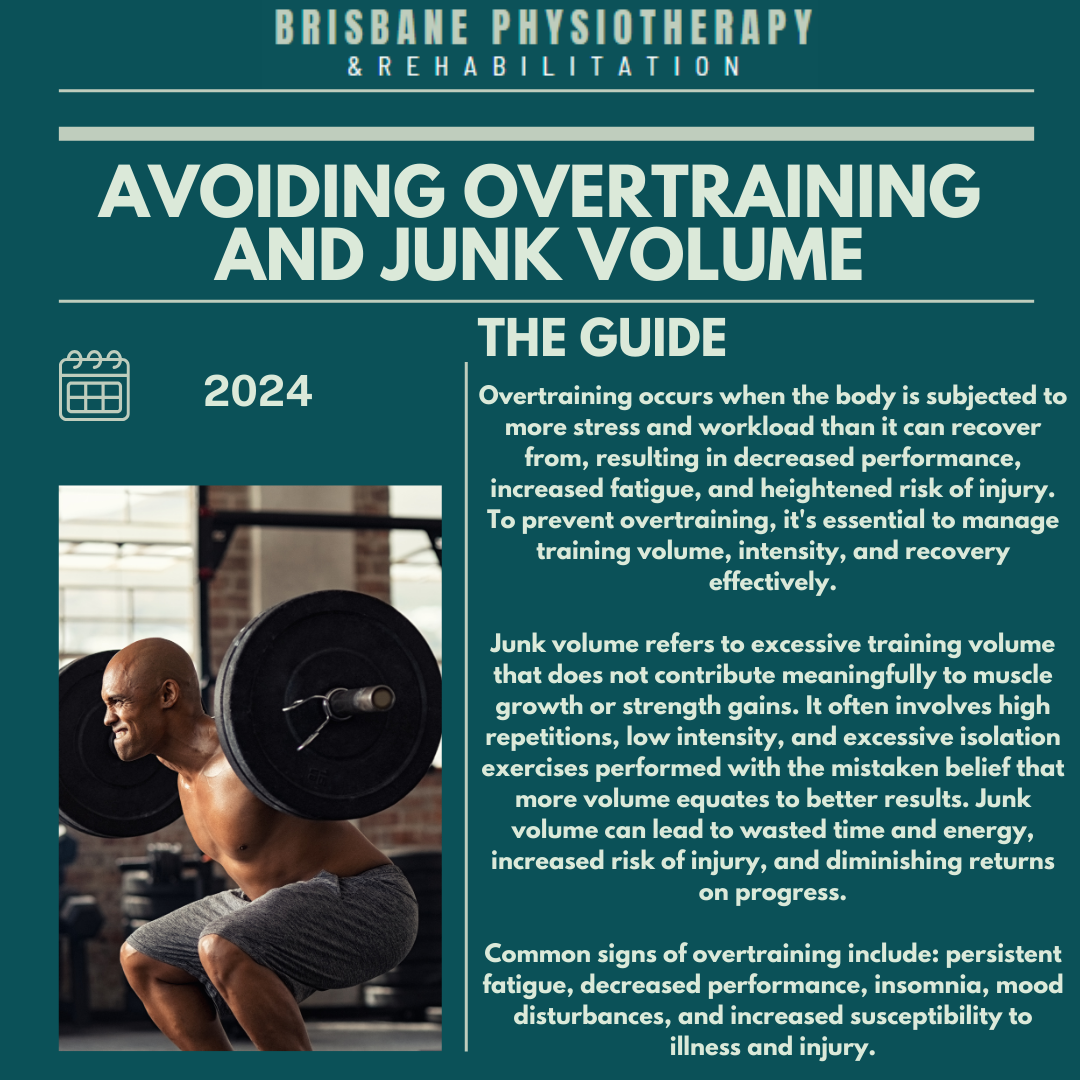Avoiding Overtraining and Junk Volume
Introduction:
In the quest for muscle growth and rehabilitation, it's crucial to strike the right balance between training intensity and volume. While pushing yourself in the gym is essential for stimulating muscle adaptation, excessive training volume without adequate recovery can lead to overtraining syndrome and hinder progress.
Understanding Overtraining:
Overtraining occurs when the body is subjected to more stress and workload than it can recover from, resulting in decreased performance, increased fatigue, and heightened risk of injury. To prevent overtraining, it's essential to manage training volume, intensity, and recovery effectively.
What is Junk Volume?
Junk volume refers to excessive training volume that does not contribute meaningfully to muscle growth or strength gains. It often involves high repetitions, low intensity, and excessive isolation exercises performed with the mistaken belief that more volume equates to better results. Junk volume can lead to wasted time and energy, increased risk of injury, and diminishing returns on progress.
Signs of Overtraining:
Recognizing the signs of overtraining is crucial for preventing its negative consequences. Common symptoms include persistent fatigue, decreased performance, insomnia, mood disturbances, and increased susceptibility to illness and injury.
Optimal Sets For Muscle Growth And The Point Of Diminishing Returns
To maximise muscle growth while avoiding overtraining, it's essential to balance training volume and intensity. Some research suggests that an optimal range of sets per muscle group is around 10 to 20 sets per week, with some more recent research has demonstrated further gain may be made with even higher volumes including up to 52 sets per week.
Additional evidence has highlighted that around 6 sets per muscle group per workout is around the optimal range with extra sets beyond this likely to have diminishing returns, especially greater than 12 sets per muscle group per workout.
It should be noted that these ranges are assuming that other factors such as intensity, load and technique are optimised. Beyond these thresholds, further volume may be considered excessive have a higher risk of overtraining, fatigue, and risk of injury without significant gains in muscle size or strength.
Conclusion:
Achieving optimal muscle growth requires a balanced approach to training volume, intensity, and recovery. By following practical guidelines for sets per workout and week, focusing on compound movements, and listening to your body's signals, you can maximise muscle gains while minimising the risk of overtraining and injury. Remember that consistency, patience, and smart programming are key to long-term success in your fitness journey.
